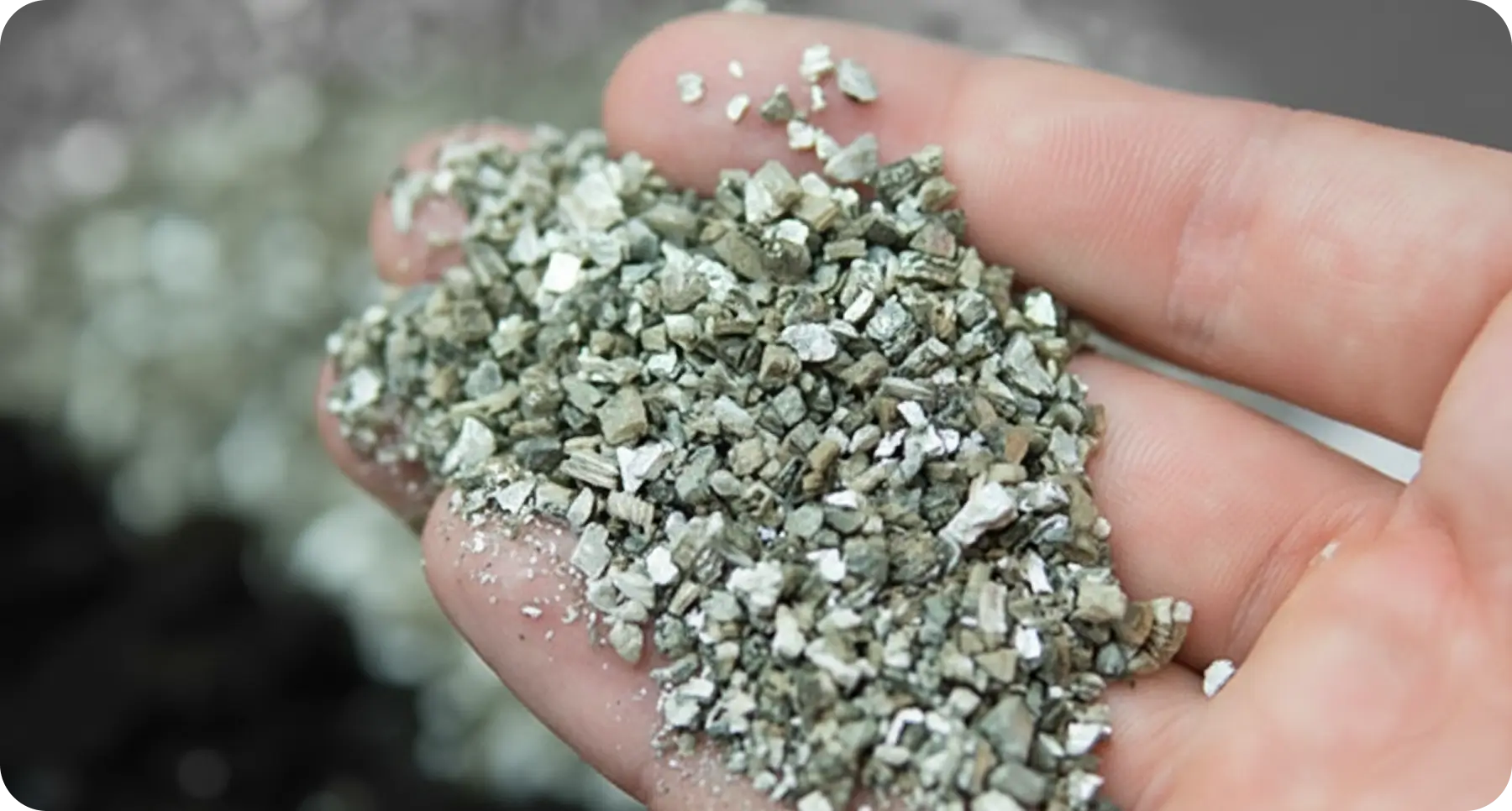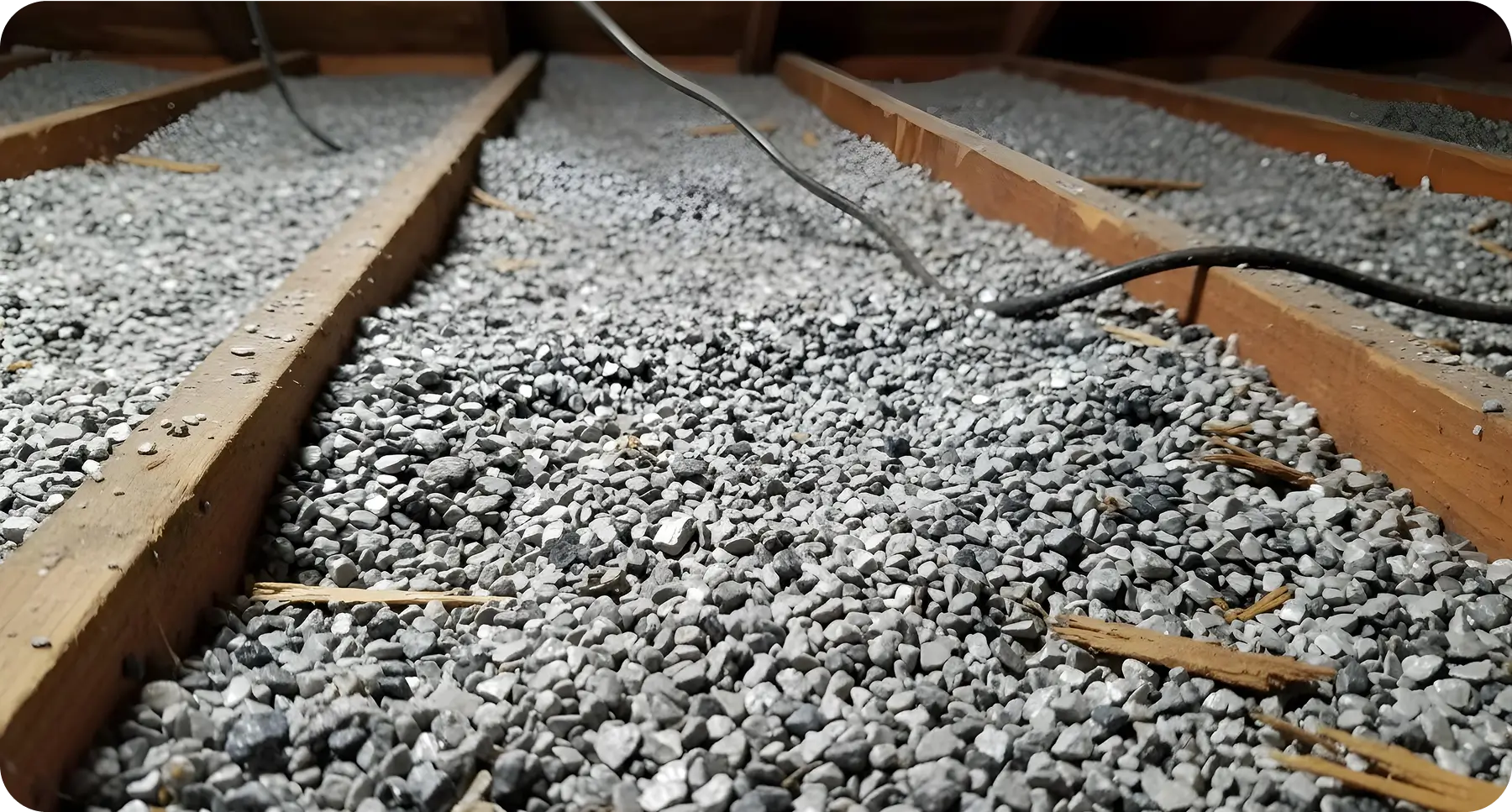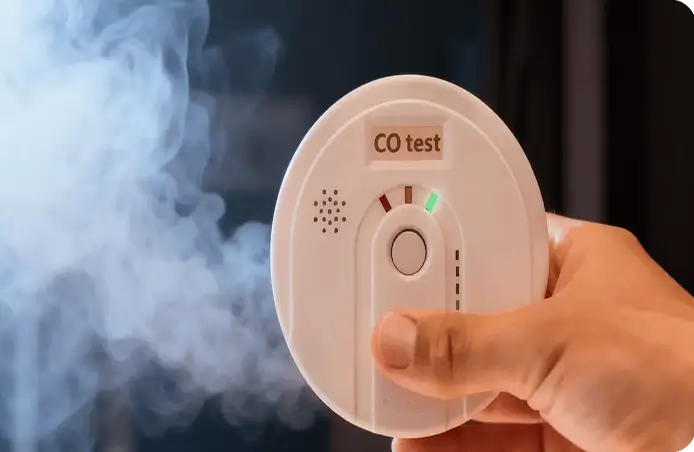If you live in an older home, you may have come across a type of insulation you’re not familiar with: vermiculite. This natural mineral was a popular choice for insulating homes — especially attics — from the 1920s to the 1970s. But what is it exactly, and should you be concerned if you find it?

What is Vermiculite?
Vermiculite is a silver-gold or grayish-brown mineral. In its natural state, it’s flat and shiny. When heated, it expands into a lightweight, pebble-like material filled with air pockets, which made it a popular insulation choice in older Montreal homes. It’s also fire-resistant, which added to its appeal.
On its own, vermiculite is not dangerous. The risk comes from what it was often contaminated with during mining: asbestos.
The Asbestos Connection: The Real Safety Concern
The primary health risk with vermiculite insulation is that much of it was contaminated with asbestos during mining.
- Asbestos is a known carcinogen, linked to mesothelioma, lung cancer, and asbestosis.
- A major source of contamination was Zonolite® Attic Insulation, sold widely across Canada (including Montreal and Laval). It was mined in Libby, Montana — a site with heavy asbestos deposits.
✅ This makes vermiculite one of the hidden challenges of older homes that every homeowner should understand.


What to Do if You Suspect Vermiculite in Your Home
1. Do Not Disturb It : Asbestos is only dangerous when its fibers become airborne and inhaled. If the insulation is sealed in your attic or behind walls, it poses minimal immediate risk.
2. Assume it Contains Asbestos : Not all vermiculite is contaminated — but since much of it in North America was, it’s safest to assume asbestos may be present until proven otherwise.
3. Get it Tested Before Renovations : If you plan renovations or repairs that could disturb insulation (like opening walls, ceilings, or attics), get the material professionally tested.
4. Hire a Professional for Removal : If asbestos is confirmed and you choose to remove it, this is not a DIY job. Only certified asbestos abatement companies should perform the work, using specialized equipment to protect your family’s health.

Knowledge is Your Best Tool
Discovering vermiculite insulation in your home doesn’t automatically mean you’re at risk. If it’s undisturbed, it may not need removal. The key is to make informed decisions with professional guidance.
At Mose Home Inspection, our certified inspectors can:
- Identify possible vermiculite insulation
- Explain potential risks in plain language
- Document findings in the Mose Report, giving you an actionable plan



